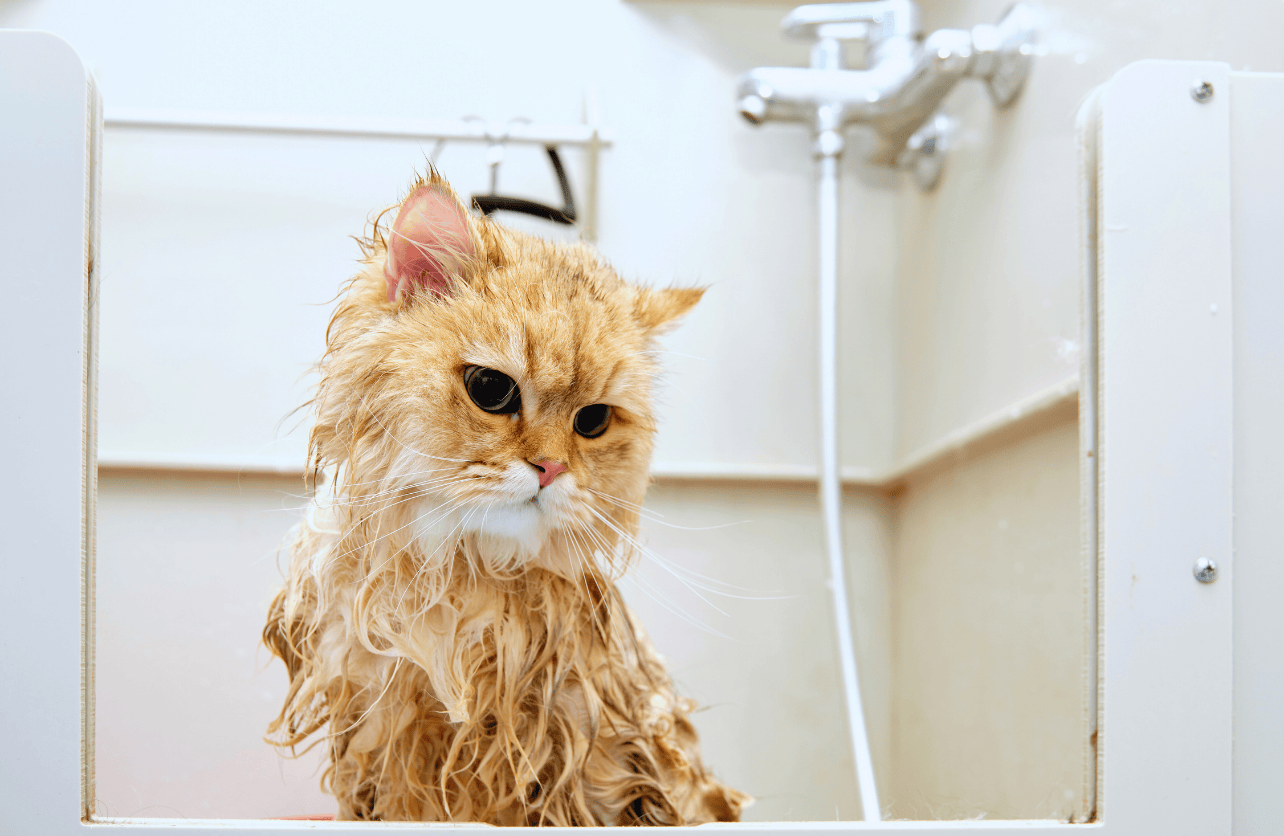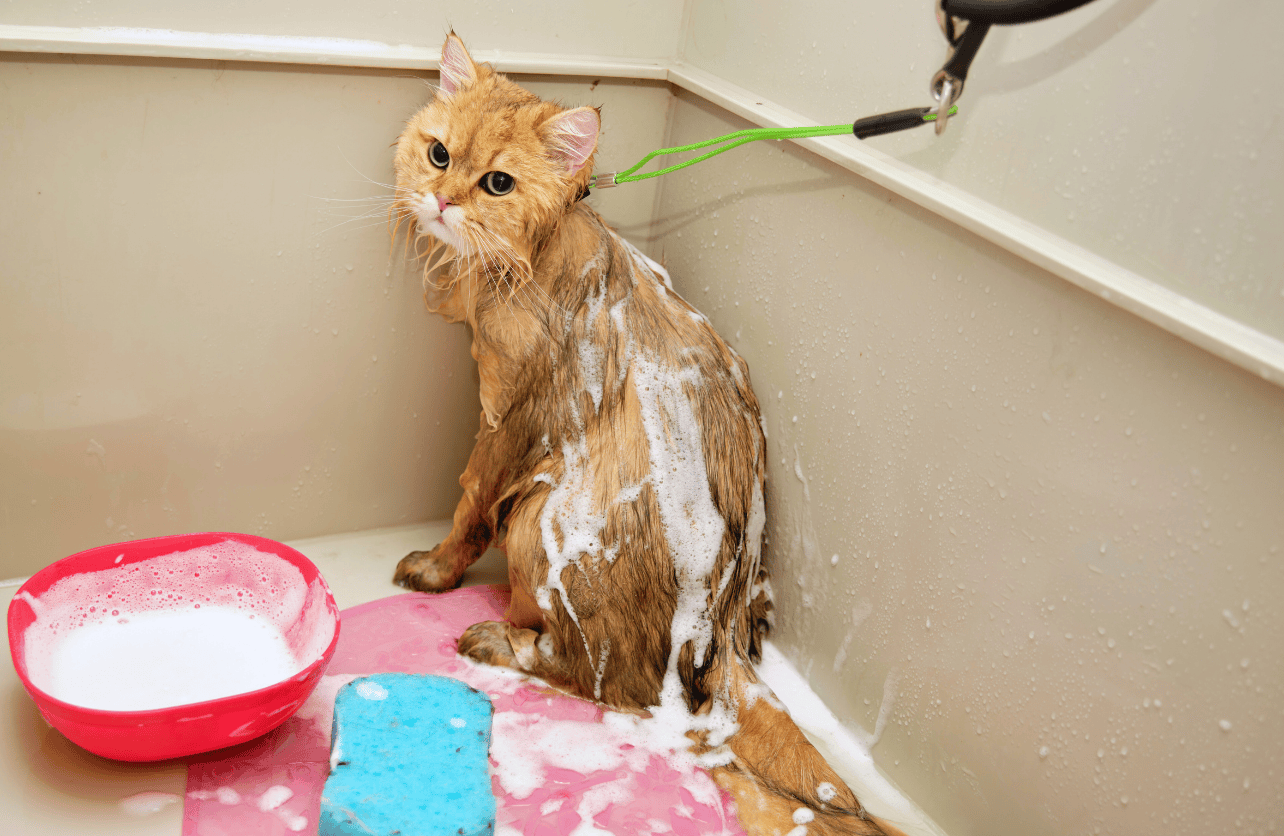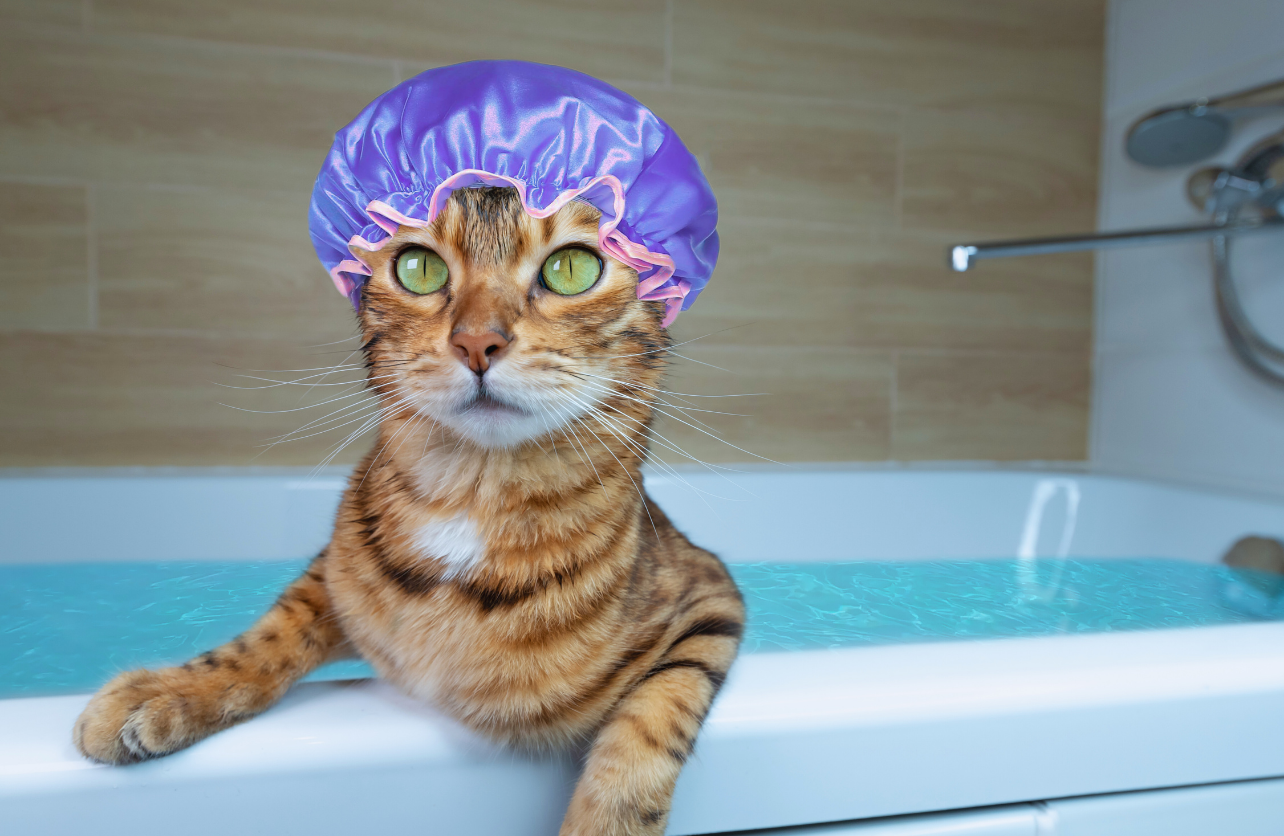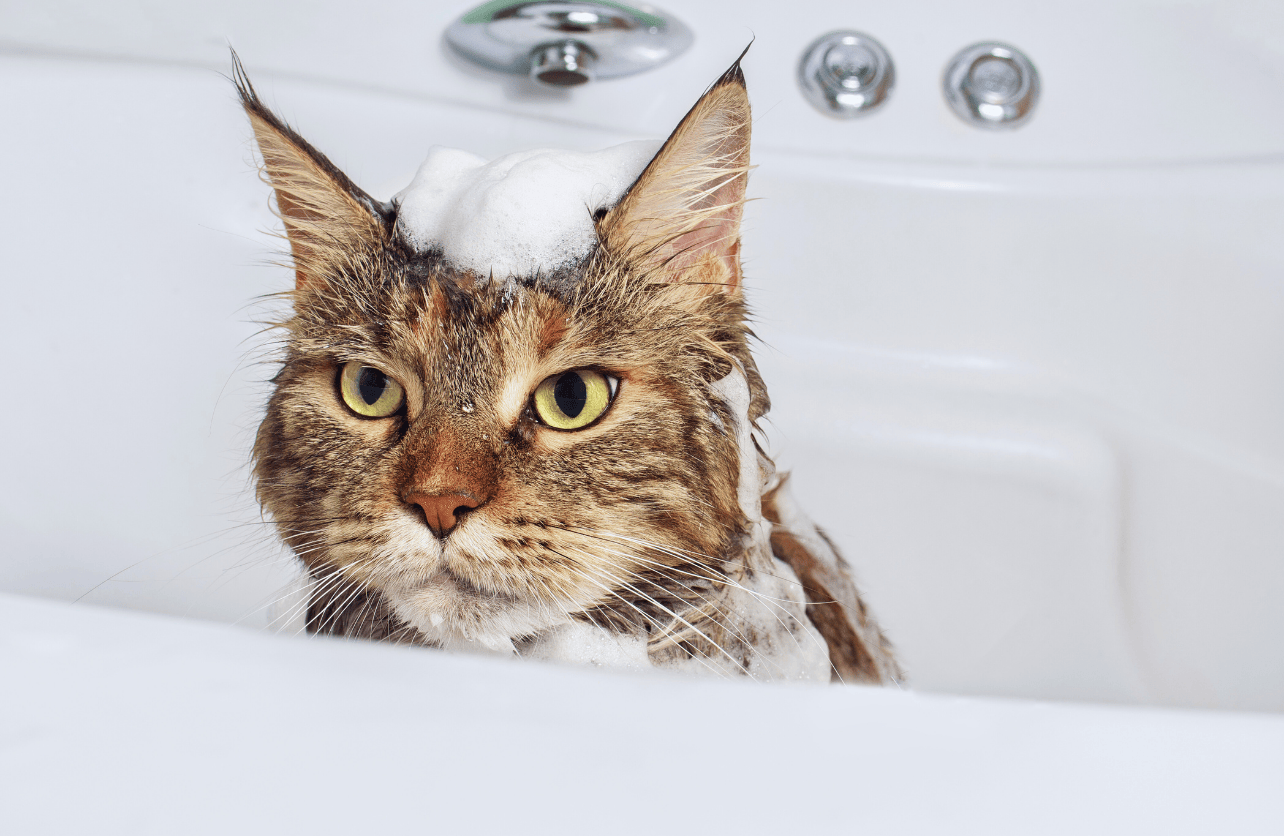Is Tearless Baby Shampoo Safe for Cats?

While cats are generally adept at keeping themselves clean, there are times when a bath becomes necessary—be it due to stubborn dirt, medical reasons, or shedding issues. When it comes to selecting a shampoo, many cat owners wonder whether tearless baby shampoo is a safe and effective option for their pets. This article explores the safety, benefits, potential risks, and alternatives to using tearless baby shampoo on cats, ensuring your kitty stays clean without compromising their health.
What is Tearless Baby Shampoo?
Tearless baby shampoo is a gentle cleanser formulated specifically for infants. Unlike regular shampoos, tearless versions are designed to be non-irritating to the eyes, making bath time a more comfortable experience for babies. These shampoos typically contain mild surfactants, minimal fragrances, and are free from harsh chemicals that could cause irritation.
Key Features of Tearless Baby Shampoo:
- Mild Ingredients: Formulated with gentle cleansers to avoid irritation.
- Fragrance-Free or Mildly Scented: Reduces the risk of allergic reactions.
- Hypoallergenic: Designed to minimize the chances of skin sensitivities.
- Non-Comedogenic: Doesn’t clog pores, maintaining skin health.
Benefits of Using Tearless Baby Shampoo on Cats

While not specifically designed for felines, tearless baby shampoo offers several advantages that might make it an appealing choice for cat owners:
Gentle on Sensitive Skin
Cats have delicate skin that can be easily irritated by harsh chemicals found in some pet shampoos. Tearless baby shampoos are formulated to be mild, reducing the risk of skin irritation and dryness.
Non-Toxic Ingredients
Many tearless baby shampoos avoid using harmful chemicals, making them a safer alternative compared to some commercial pet shampoos that may contain parabens, sulfates, or artificial fragrances.
Ease of Use
The tearless formula ensures that the shampoo doesn’t cause discomfort if it comes into contact with your cat’s eyes. This feature can make the bathing process smoother and less stressful for both you and your pet.
Availability and Affordability
Tearless baby shampoos are widely available and often more affordable than specialized pet shampoos, making them a convenient option for cat owners.
Potential Risks of Using Tearless Baby Shampoo on Cats
Despite the benefits, there are important considerations and potential risks to be aware of before using tearless baby shampoo on your cat:
pH Imbalance
Human and feline skin have different pH levels. Cats have a more acidic skin pH (around 6.0) compared to humans (around 5.5). Using a shampoo not specifically formulated for cats can disrupt this balance, leading to dry, irritated skin or other dermatological issues.
Lack of Essential Ingredients
Cat-specific shampoos often contain ingredients tailored to feline skin and coat health, such as conditioners, vitamins, and moisturizers. Tearless baby shampoos may lack these beneficial components, potentially leaving your cat’s coat less nourished.
Potential Allergens
Even though tearless baby shampoos are designed to be hypoallergenic, some cats may still react to certain ingredients like fragrances or preservatives. Always check the ingredient list and perform a patch test before a full bath.
Residue Build-Up
Using a non-rinse formula or insufficiently rinsing the shampoo can leave residue on your cat’s fur, attracting dirt and causing matting. This can lead to further skin irritation and discomfort.
Proper Usage Guidelines for Using Tearless Baby Shampoo on Cats

If you decide to use tearless baby shampoo for your cat, following proper guidelines is crucial to minimize risks and ensure a safe bathing experience:
Patch Test First
Before applying the shampoo all over your cat, conduct a patch test. Apply a small amount of diluted shampoo to a discreet area of your cat’s skin to check for any adverse reactions over the next 24 hours.
Dilute the Shampoo
To further reduce the risk of irritation, dilute the tearless baby shampoo with water. A common ratio is one part shampoo to three parts water. This ensures the shampoo is gentler on your cat’s skin.
Use Lukewarm Water
Cats are sensitive to temperature. Ensure the water is lukewarm to make the bathing process comfortable and to avoid shocking your cat’s system.
Avoid the Face Area
Carefully avoid your cat’s eyes, ears, and nose during the bath. These areas are more sensitive and prone to irritation. Use a damp cloth to gently clean the face if necessary.
Rinse Thoroughly
Ensure all shampoo is thoroughly rinsed out of your cat’s fur. Residue can lead to irritation, itching, and attract dirt, causing matting and further skin issues.
Dry Properly
After the bath, gently towel dry your cat or use a hairdryer on a low, cool setting if your cat tolerates it. Ensure your cat is completely dry to prevent dampness, which can lead to fungal infections.
Alternatives to Tearless Baby Shampoo for Cats

For those who prefer to use products specifically designed for cats, several alternatives offer tailored benefits without the potential risks associated with human shampoos:
1. Cat-Specific Shampoos
These shampoos are formulated to match the pH of feline skin and often contain ingredients that promote coat health and skin condition. They are available in various formulations, including hypoallergenic, medicated, and moisturizing options.
2. Natural and Organic Shampoos
Natural shampoos made with organic ingredients like oatmeal, aloe vera, and coconut oil can be gentle on your cat’s skin while providing additional moisturizing benefits.
3. Waterless Shampoos and Wipes
For cats that are particularly averse to baths, waterless shampoos or cleansing wipes designed for pets can be an effective alternative for maintaining cleanliness without the need for full baths.
4. Homemade Solutions
Creating your own cat-friendly shampoo using ingredients like diluted apple cider vinegar or baking soda can provide a natural alternative. However, it’s essential to research safe recipes and consult with your veterinarian before use.
Signs of Adverse Reactions
After using tearless baby shampoo on your cat, monitor for any signs of adverse reactions. If you notice any of the following, discontinue use immediately and consult your veterinarian:
- Redness or Irritation: Signs of inflammation or discomfort on the skin.
- Excessive Scratching or Licking: Indications of itching or allergic reactions.
- Dry or Flaky Skin: Signs of dehydration or disrupted skin barrier.
- Unusual Behavior: Signs of distress, such as excessive meowing or trying to hide.
Summing Up
Using tearless baby shampoo on cats can be a convenient option for occasional baths, especially when cat-specific shampoos are not readily available. However, it’s essential to understand the potential risks, including pH imbalance, lack of essential nutrients, and possible allergic reactions. For optimal skin and coat health, investing in high-quality, cat-specific grooming products is highly recommended. Always prioritize your cat’s comfort and well-being by choosing the safest and most effective grooming solutions.
Pro Tip: Regular grooming and a balanced diet are key components of your cat’s overall health. Incorporate brushing and appropriate bathing into your routine to keep your feline friend clean, happy, and healthy.
FAQs
1. Can tearless baby shampoo cause allergies in cats?
Yes, some cats may develop allergic reactions to ingredients in tearless baby shampoos, such as fragrances or preservatives. Always perform a patch test before full use.
2. How often should I bathe my cat with tearless baby shampoo?
Bathing frequency depends on your cat’s breed, activity level, and skin condition. Generally, once every few months is sufficient, but consult your veterinarian for personalized advice.
3. What should I do if my cat shows signs of irritation after using tearless baby shampoo?
Immediately rinse your cat with lukewarm water to remove any remaining shampoo and consult your veterinarian for appropriate treatment.
4. Are there tearless shampoos specifically designed for cats?
Yes, many pet brands offer tearless or gentle shampoos formulated specifically for cats, ensuring safety and effectiveness.
5. Can I mix tearless baby shampoo with other grooming products for my cat?
It’s best to avoid mixing different grooming products unless recommended by your veterinarian, as it can increase the risk of skin irritation or adverse reactions.
Your Pet’s Best Interest, Always
At Pet Institute, we take pet care seriously. We're dedicated to transparency, impartiality, and the well-being of your pets in every article, review, and recommendation we provide. Our unwavering commitment to these principles ensures that you, our valued reader, always receive reliable and unbiased information. Let us be your trusted guide in the world of pet care and companionship.